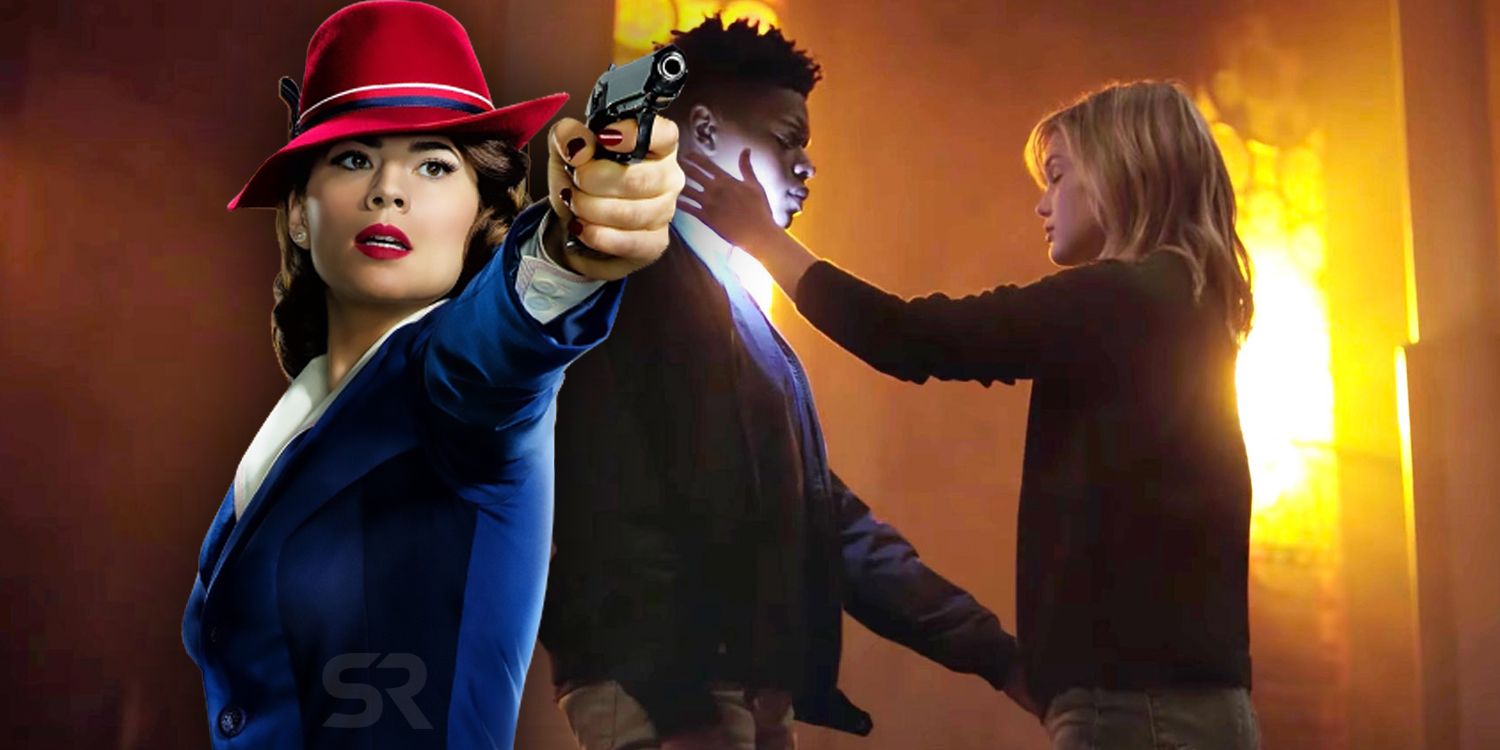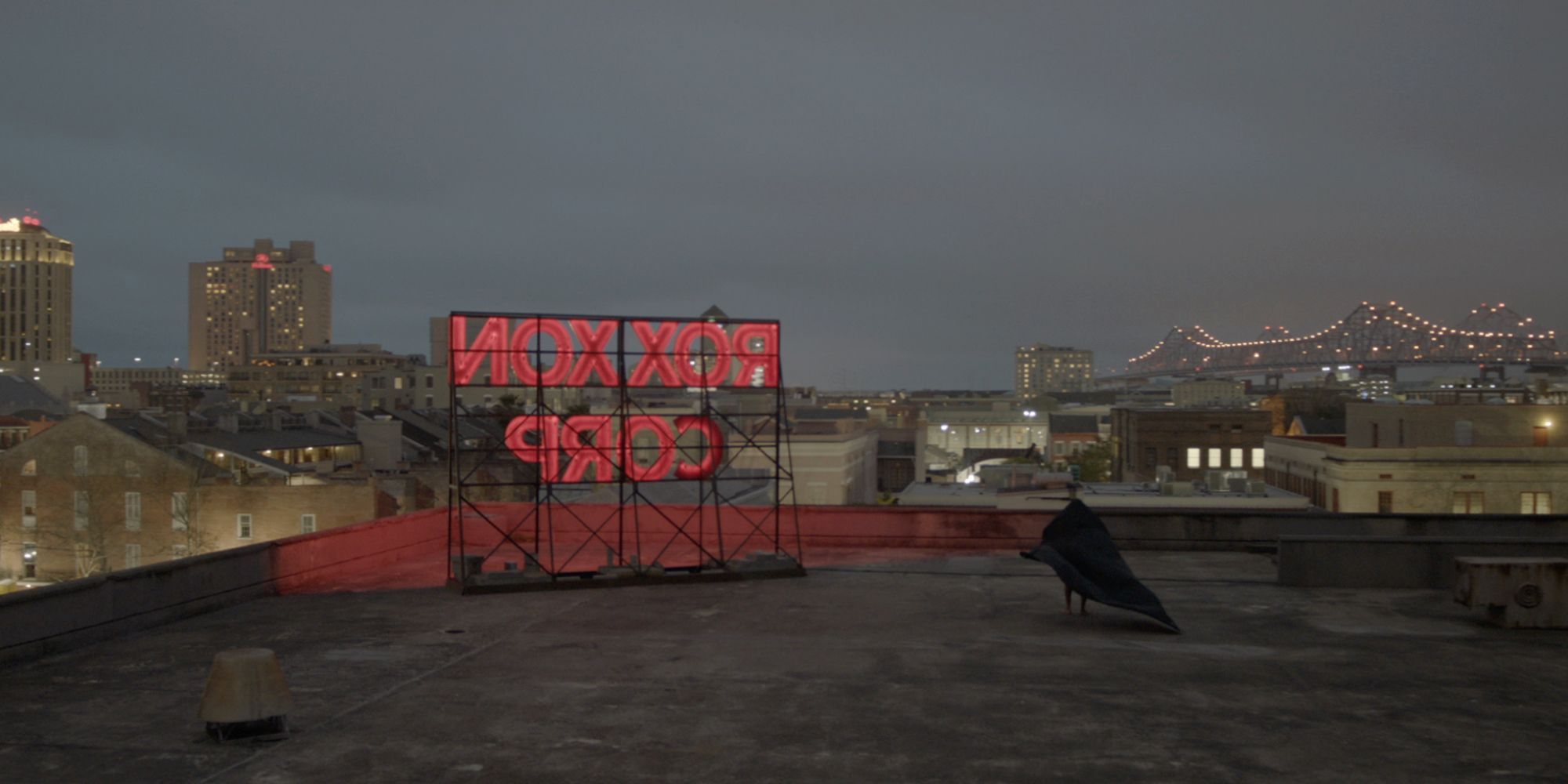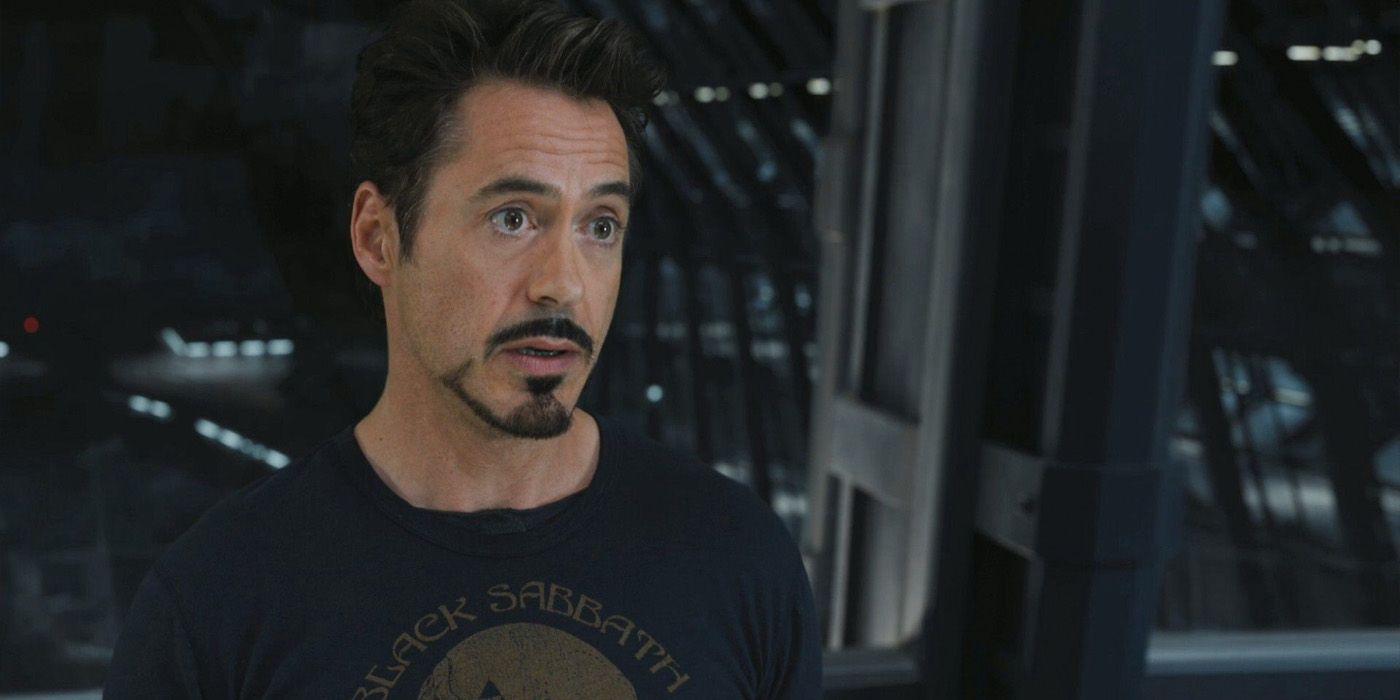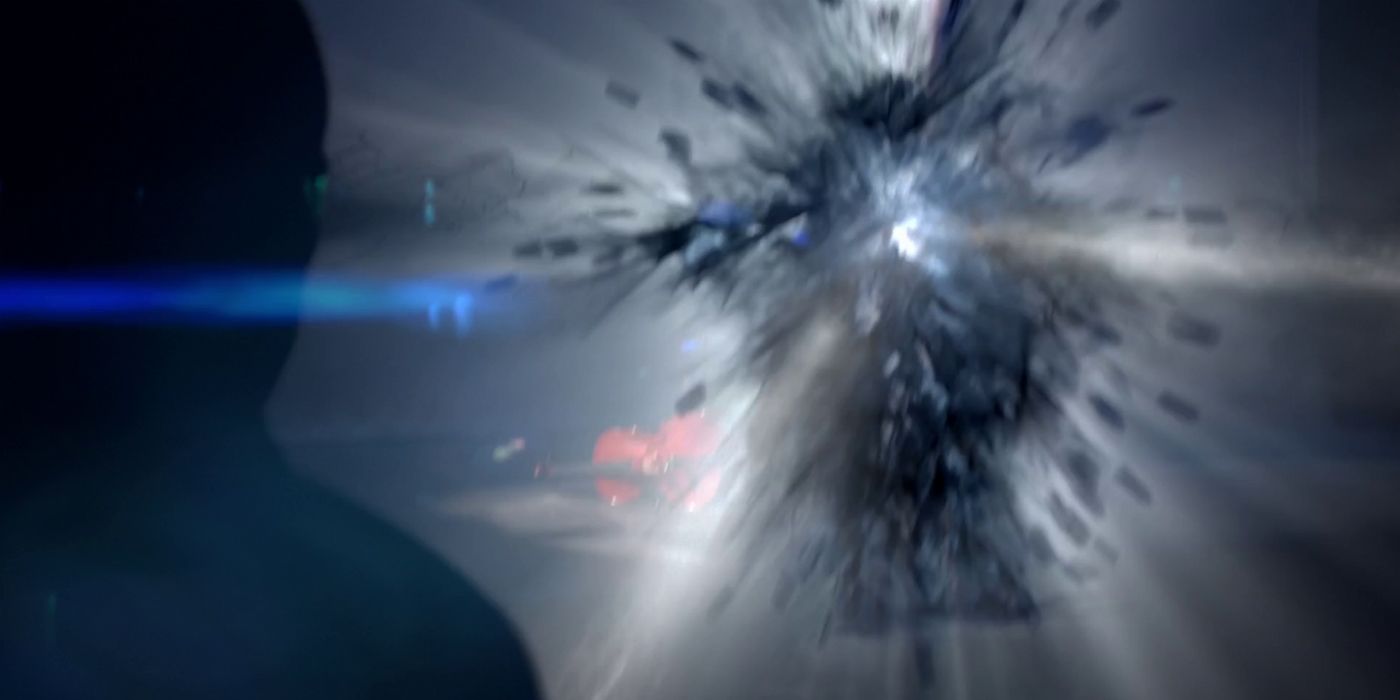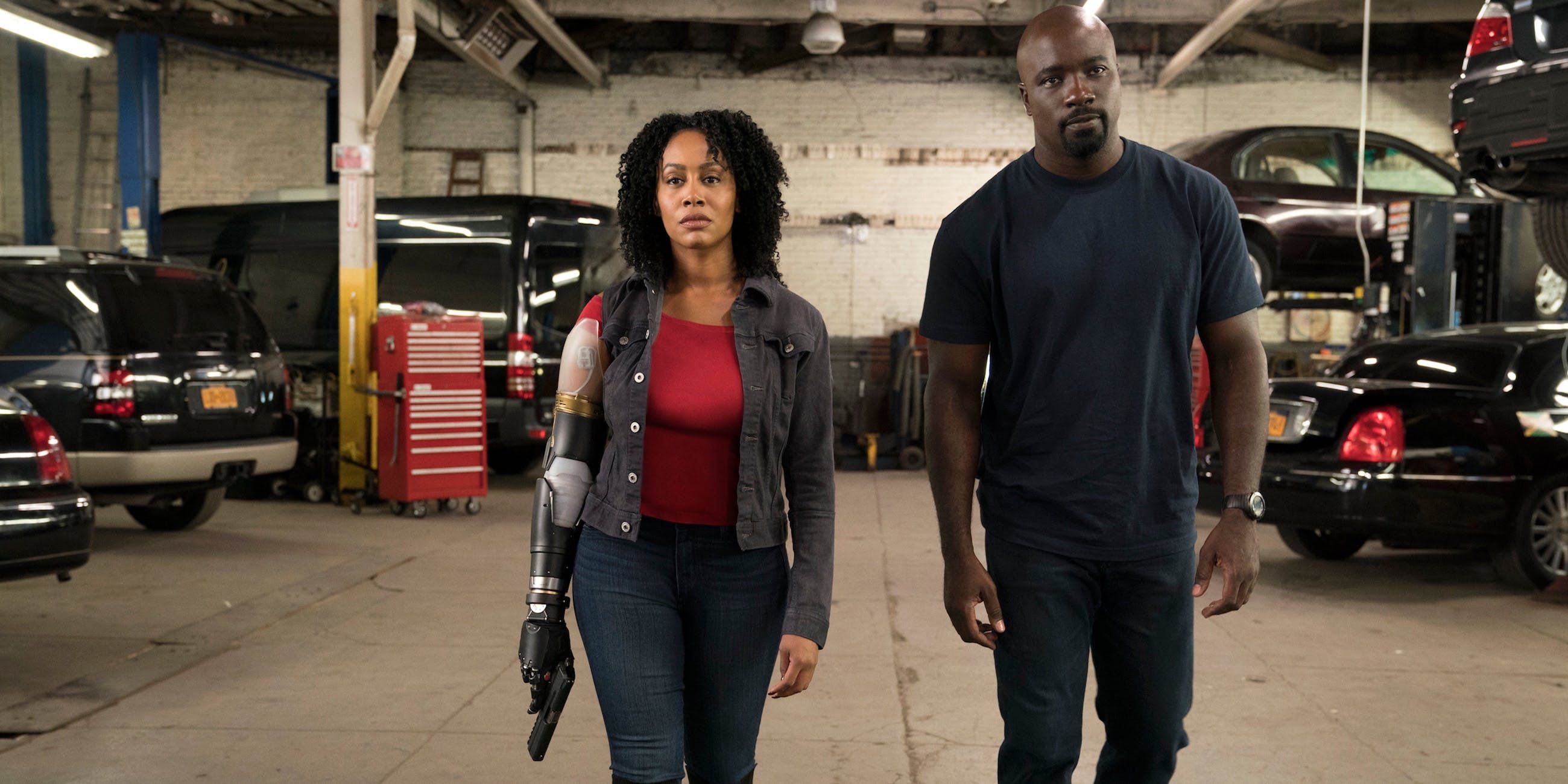The first season of Cloak & Dagger has been a masterclass in how to connect a Marvel TV series to the wider MCU. A decade ago, Marvel launched their shared cinematic universe with Iron Man, and since then that universe has expanded to embrace an ever-growing series of movies and TV shows. Fans love the idea that everything in this universe is connected, but the sprawling nature of the MCU means it's getting increasingly difficult to keep track of everything.
Recent Marvel TV series have tended to dial back on the tie-ins. The Marvel Netflix shows avoid overt connections, save for occasionally referring to "The Incident" - the Chitauri invasion of New York in 2012's The Avengers. Marvel's Runaways avoided all but the most subtle, almost imperceptible nods to the rest of the MCU, and even Agents of S.H.I.E.L.D. has become increasingly distanced from the movies.
Related: Avengers: Infinity War Spoils Agents of SHIELD's Season 5 Finale
But Cloak & Dagger is very different. This series ties in to the wider MCU - both movies and other TV shows - in so many different ways. It's frankly a masterclass in continuity, with showrunner Joe Pokaski skillfully embedding the series in the shared cinematic universe. Even counting Agents of S.H.I.E.L.D., no Marvel TV series has been so well-connected to the rest of the MCU as Cloak & Dagger. Let's take a look at how the series pulls it off.
- This Page: Roxxon, Tony Stark & Danny Rand
- Page 2: The Darkforce & The Luke Cage Nod
Roxxon - The Villains of Cloak & Dagger
The most obvious tie-in is Roxxon Corp itself. Roxxon's corrupt leadership are the real villains in Cloak & Dagger: businessmen who've shed any semblance of morality in their quest for power and profit. Their motives are laid bare when Tandy wanders among them, using her touch to explore the deepest desires of Roxxon execs. All, without exception, are motivated by greed and a lust for power.
Roxxon's corrupt nature almost brings New Orleans to the brink of destruction. Eight years ago, Roxxon cut corners in their attempts to tap into the energy that lay beneath New Orleans. They blamed Nathan Bowen for the tragic explosion of a drilling rig, covering up their own role so they could continue their work. In the present, Roxxon remain utterly committed to keeping their crimes secret, even hiring assassins to murder anyone who comes close to uncovering their actions.
But Roxxon is an important tie to the rest of the MCU. According to Agent Carter, even in the '40s the energy company was corrupt, with Roxxon bosses participating in the illegal cartel known as the Council of Nine, manipulating the global economy for their own ends. (It's even suggested they orchestrated the Great Depression in 1929.) In Agents of S.H.I.E.L.D., Roxxon was the parent company of Cybertek, thus responsible for the Centipede and Deathlok projects. In Daredevil, Roxxon was affiliated with the Hand.
Related: Cloak & Dagger Includes Major MCU Connection and Easter Eggs
And Roxxon has appeared on the big screen, too. A Roxxon sign can be seen in the background during Iron Man's battle with Iron Monger in the first Iron Man film; Roxxon sponsored a race car in Iron Man 2; and a Roxxon employee was supposedly killed by the Mandarin in Iron Man 3. The Marvel one-shot A Funny Thing Happened on the Way to Thor's Hammer saw Phil Coulson stop off at a Roxxon gas station and deal with an armed robbery.
This is how you do continuity. Cloak & Dagger itself tells viewers everything they need to know about Roxxon. All that additional continuity is there for the Marvel fans, for the members of the audience who love the way everything in the MCU ties together. But it doesn't disrupt the story in the slightest.
Name-Dropping Tony Stark and Danny Rand
The final episode of Cloak & Dagger, "Colony Collapse," included a neat reference to Tony Stark and Danny Rand. When Dagger confronts the head of Roxxon Gulf, he explains his quest for power. Just as Roxxon's underlings are driven by competition and greed, so the main management is desperately attempting to compete with the Starks and the Rands of this world. In an interview with Entertainment Weekly, Pokaski described this as "a fun little nod" that reminds viewers that the show exists in a shared universe. In Pokaski's view, the existence of technology like the Arc Reactor would have unlocked a sort of modern version of the space race, where different companies were desperately seeking a way to take advantage of the next superhero science.
It's a smart approach, but it actually adds further depth to the story of Cloak & Dagger. In 2008, Tony Stark realized that the weapons he was developing were falling into the wrong hands. He shifted his entire company's focus away from the arms industry, towards alternative energy sources. That made Stark a direct competitor for Roxxon, and by 2010 Roxxon would have been feeling the sting from it; after all, the Arc Reactor gave Stark a decided advantage. That, then, is why Roxxon began cutting corners and making mistakes eight years ago. Cloak & Dagger's MCU setting adds further depth to the dialogue and ideas presented in the show.
Page 2: The Darkforce & The Luke Cage Nod
The Darkforce - the Power Beneath New Orleans
Although Cloak & Dagger doesn't name this mysterious, dangerous energy lying beneath New Orleans, showrunner Joe Pokaski has teased that it's the Darkforce. In the comics, the Darkforce is a sort of "negative energy" with very dangerous powers; it's already appeared before in the wider MCU, in both Agent Carter and Agents of S.H.I.E.L.D.. As Agent Carter showrunner Michele Fazekas explained back in 2016:
"The cool thing about what we learned as we researched Darkforce over the course of Marvel comic book history is, it affects people in different ways. It's created a bunch of superheroes, it's created a bunch of villains, and it has all these different properties. It could be a liquid, it could be a gas, it could be a solid, it could give you powers, it could kill you. It has a lot of different applications..."
The Darkforce was first observed in 1946, possibly as a result of a Hydra experiment. Footage from this incident reached Isodyne Energy, and after the war they attempted to manipulate this mysterious power, referring to it as "Zero Matter." Fortunately, SSR agent Peggy Carter was on hand to stop those experiments. According to throwaway dialogue in Agents of S.H.I.E.L.D. season 4, Isodyne was bought out by Roxxon, and they presumably began working with Darkforce again. Into the 2000s, it's reasonable to assume Roxxon's experiments were responsible for granting Marcus Daniels Darkforce-derived powers, as seen in the S.H.I.E.L.D. episode "The Only Light in the Darkness."
Roxxon, then, is one of the few companies in the MCU to be familiar with the Darkforce (indeed possibly the only one). It makes perfect sense that, having discovered this energy lying beneath New Orleans, Roxxon would attempt to tap into it. Again, though, notice that the links are there if you want to see them. You don't need to know the history of the Darkforce in order to understand Cloak & Dagger. You don't need to have rewatched Agent Carter, or any episodes of Agents of S.H.I.E.L.D.. The story is entirely self-contained - but placing it in its broader MCU context simply adds more depth to it.
Related: SHIELD Episode 100 Hid Awesome MCU Easter Eggs in Plain Sight
The Luke Cage Nod
One final reference deserves to be examined, linking Cloak & Dagger to Luke Cage. Detective Brigid O'Reilly is one of the most important secondary characters in Cloak & Dagger, a police officer who's moved from New York to New Orleans. Dialogue revealed that O'Reilly had actually worked with Misty Knight, and that the two had been friends. Meanwhile, in Luke Cage season 2 Misty reminisced about an old colleague, O'Reilly, who'd moved to New Orleans. It was a brilliant detail, delighting viewers by deepening the ties between two self-contained TV shows. According to Pokaski, this "crypto-crossover" was actually dreamed up by someone over at Marvel, and both Pokaski and Luke Cage showrunner Cheo Hodari Coker were delighted to slip it in.
-
When the MCU first began, the phrase "It's all connected" seemed to be Marvel's watchword. That's not quite so much the case any more, but Cloak & Dagger is the exception; this is one series that's deeply embedded in the fertile soil of the Marvel Cinematic Universe. At the same time, though, showrunner Joe Pokaski had pulled it off without making any of the connections seem forced, and without crafting a plot that you need to have watched a dozen movies and TV shows to make sense of it. That's an impressive feat, and it makes Cloak & Dagger the most effectively-connected MCU TV series of all.

